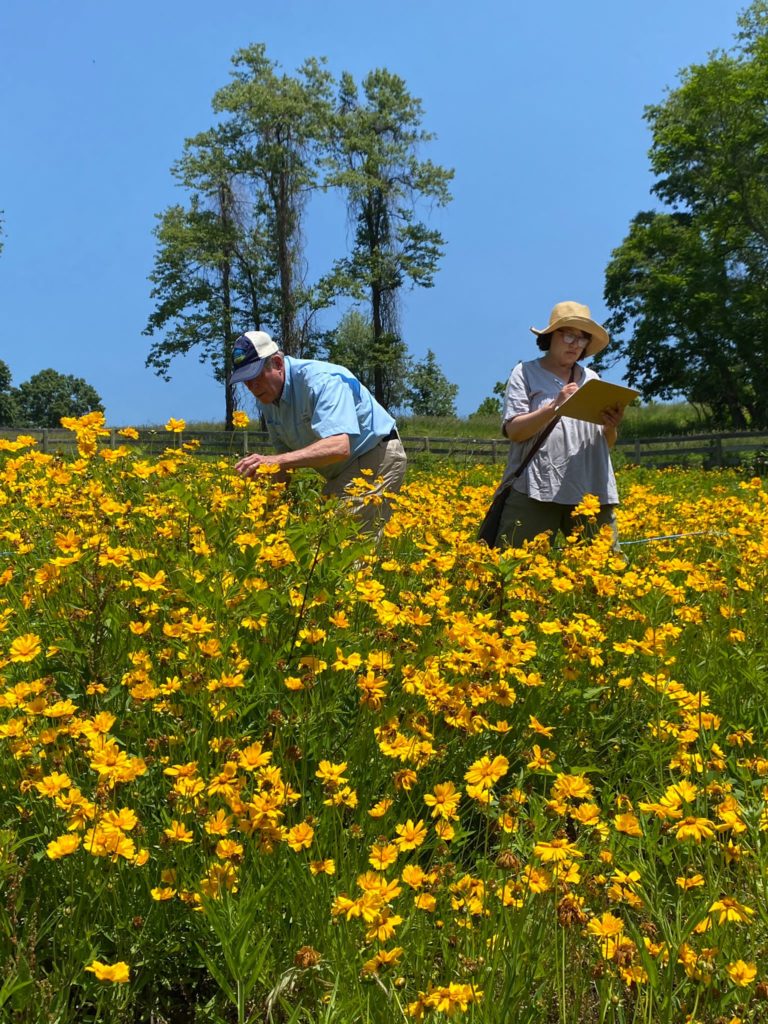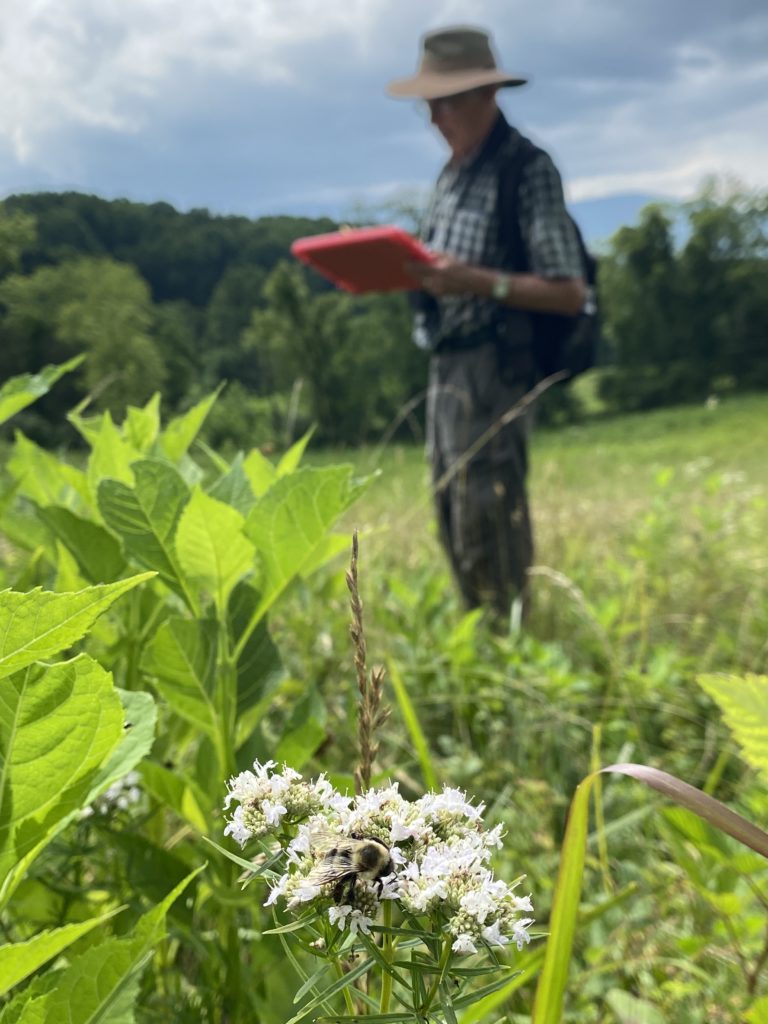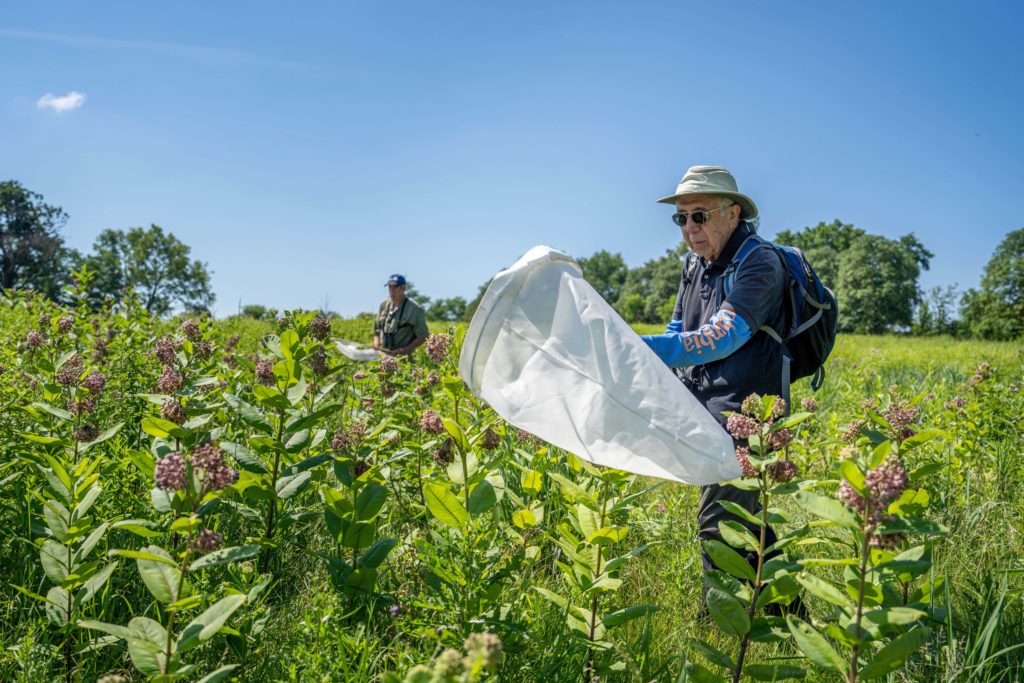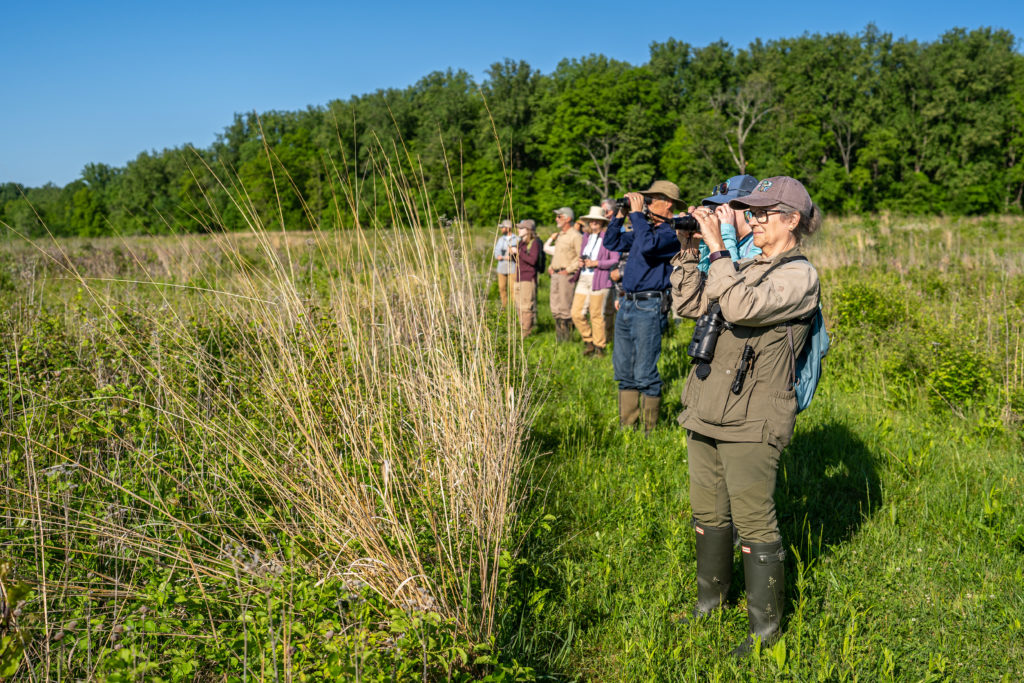Community Scientists

For volunteer opportunities please visit the Volunteer Page for with Smithsonian’s National Zoo and Conservation Biology Institute. This page is update frequently, so be sure to keep an eye out.
Grassland Bird Surveys
- Field Season: May-June
- Point counts are three 10-minute surveys conducted within 3 hours of sunrise.
- Volunteers are required to conduct point counts on three mornings between May and June.
- Each volunteer will provide their own binoculars and field guides; survey datasheets and site directions will be provided.
- Estimated time commitment of 20 hours, including training and travel.
Click Here For More Info
We will provide an introductory training at a participating research site that includes a brief overview of project goals, survey protocols, data collection, and site assignments. At this training, we will host a field-based practice survey for new volunteers covering point count survey methodology. A working knowledge of local bird species is recommended for participants in this survey, but new volunteers who are eager to learn are welcome!
Grassland Pollinator Surveys
- Field Season: June-August
- Surveys are conducted between 12:00-4:00 PM when weather is conducive to pollinator activity (sunny, dry, low wind) and take 1-2 hours to complete
- The surveyor walks four 100-foot transects for 7.5 minutes each and records the number and types of pollinators seen. Volunteers are required to conduct 3 surveys from June-August.
- Survey datasheets, transect ropes, and site directions are provided.
- Estimated time commitment of 20 hours, including training and travel.
Click Here For More Info
The survey goal is to assess the number and diversity of pollinators at working cattle farms in northern Virginia. Introductory training in May includes a brief overview of project goals, survey protocols, data collection, and site assignments. Volunteers will be given resources to study basic pollinator identification and survey methods and will have the opportunity to practice survey techniques at a field-based training.
Grassland Plant Surveys
- Field Season: June-August
- Surveys take approximately 6-8 hours to complete.
- Volunteers are required to conduct one survey in June and a final survey in August.
- Survey datasheets, site directions, and Robel poles will be provided.
- Estimated time commitment of 20 hours, including training and travel.
Click Here For More Info
We will provide an introductory training at a participating research site that includes a brief overview of project goals, survey protocols, data collection, and site assignments. At this training, we will host a field-based practice survey for volunteers, where we cover grassland vegetation survey methodology and plant identification resources. VWL hosts plant identification assistance sessions during the field season. Survey teams bring unidentified plants collected during their field surveys to ID sessions, where surveyors use keys and the expertise of the collective group to determine species ID.



What to Know:
VWL provides volunteers training in the protocols used to collect data, and we do the coordination which allows surveyors access to the properties where our surveys take place. Before each survey season begins VWL hosts mandatory protocol training sessions. Our training sessions also include field safety and introductions to survey partners.

Beginners are welcome! VWL welcomes volunteers with all experience levels, from novice to professional. We give our volunteers hands-on training and work to pair newer community scientists with volunteers who are more experienced. We only ask our volunteers come to us with a strong interest in learning and sufficient time to dedicate to our project.
What Volunteers Gain:
- Opportunities to apply skills to ground-breaking scientific research
- Training in the ecology of Virginia grassland communities
- Training in survey protocols for specific guilds (birds, plants, pollinators)
- Opportunities to learn from scientists at the Smithsonian Conservation Biology Institute
- Opportunities to network and learn from others of similar interests
- Admission to VWL workshops, lectures and training events
- Free membership in the Volunteer Association at the Smithsonian’s National Zoo
What We Need From You:
- Be at least 18 years old
- Apply for Smithsonian Institution volunteer registration during application period
- Complete a background check; the VWL survey coordinator will assist with this process
- Participate in introductory training sessions for your preferred survey(s)
- Completion of assigned field surveys and delivery of data
- Professional demeanor and reliability in communicating with VWL staff, interns, survey partners, landowners, and fellow volunteers
- Prompt replies to emails concerning logistics and data management

SUPPORT VWL
VWL is supported 100% by grants and donations and our work is made possible by the generous contributions from our community.
The Smithsonian Institution is a 501(c)(3). All contributions are tax-deductible.
GET IN TOUCH
Virginia Working Landscapes
Smithsonian’s National Zoo and Conservation Biology Institute
1500 Remount Road, MRC 5537
Front Royal, Virginia 22630
SCBIVWL@si.edu
540-635-0035
